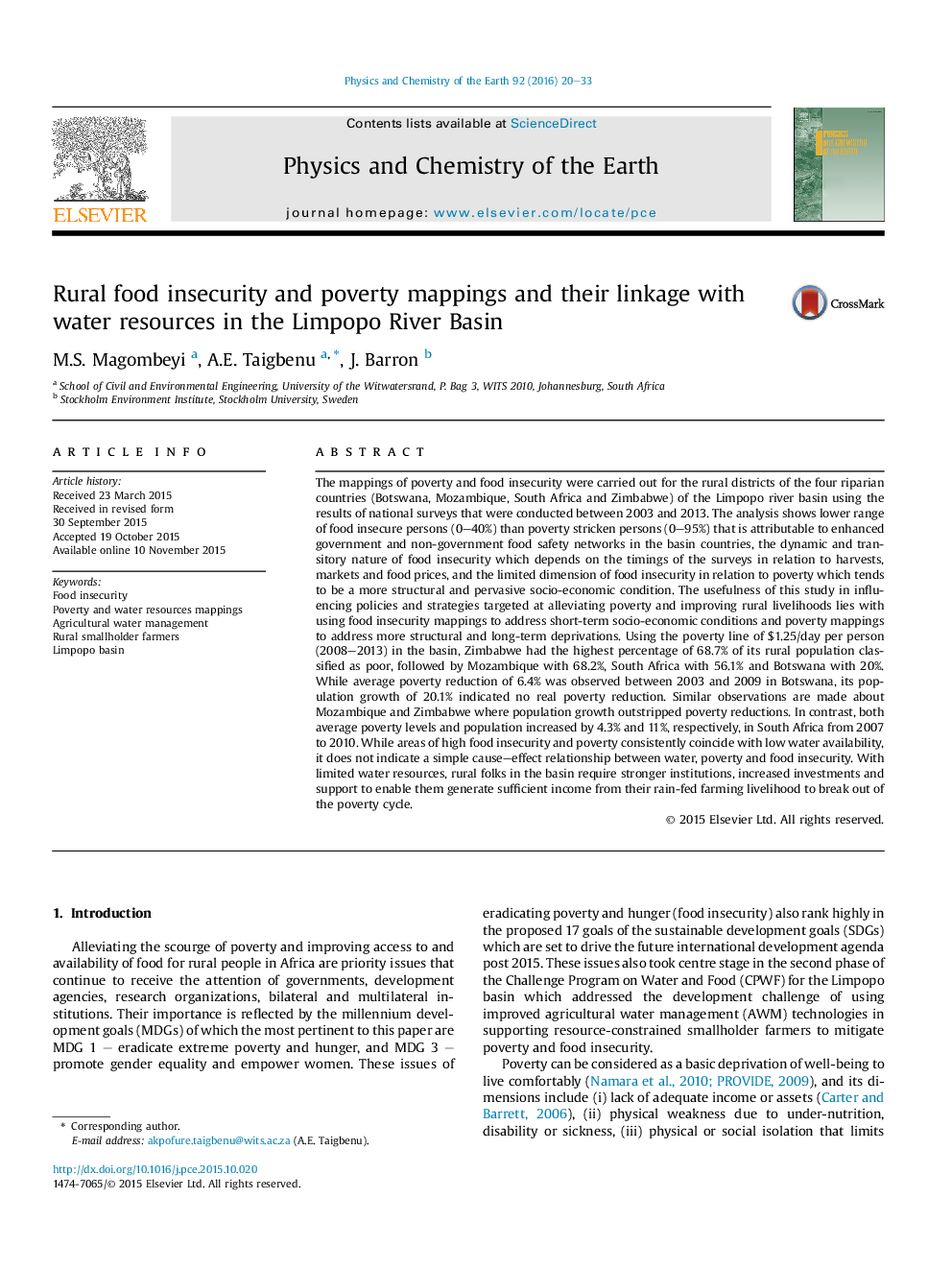| کد مقاله | کد نشریه | سال انتشار | مقاله انگلیسی | نسخه تمام متن |
|---|---|---|---|---|
| 4720844 | 1639346 | 2016 | 14 صفحه PDF | دانلود رایگان |
• Food insecurity incidences are lower than poverty in the Limpopo Basin (2003–2013).
• Rural poverty is highest in Zimbabwe, followed by Mozambique, South Africa and Botswana.
• In all countries, population growth outstripped rural poverty reductions.
• Food insecurity and poverty coincide with areas of low water availability.
The mappings of poverty and food insecurity were carried out for the rural districts of the four riparian countries (Botswana, Mozambique, South Africa and Zimbabwe) of the Limpopo river basin using the results of national surveys that were conducted between 2003 and 2013. The analysis shows lower range of food insecure persons (0–40%) than poverty stricken persons (0–95%) that is attributable to enhanced government and non-government food safety networks in the basin countries, the dynamic and transitory nature of food insecurity which depends on the timings of the surveys in relation to harvests, markets and food prices, and the limited dimension of food insecurity in relation to poverty which tends to be a more structural and pervasive socio-economic condition. The usefulness of this study in influencing policies and strategies targeted at alleviating poverty and improving rural livelihoods lies with using food insecurity mappings to address short-term socio-economic conditions and poverty mappings to address more structural and long-term deprivations. Using the poverty line of $1.25/day per person (2008–2013) in the basin, Zimbabwe had the highest percentage of 68.7% of its rural population classified as poor, followed by Mozambique with 68.2%, South Africa with 56.1% and Botswana with 20%. While average poverty reduction of 6.4% was observed between 2003 and 2009 in Botswana, its population growth of 20.1% indicated no real poverty reduction. Similar observations are made about Mozambique and Zimbabwe where population growth outstripped poverty reductions. In contrast, both average poverty levels and population increased by 4.3% and 11%, respectively, in South Africa from 2007 to 2010. While areas of high food insecurity and poverty consistently coincide with low water availability, it does not indicate a simple cause–effect relationship between water, poverty and food insecurity. With limited water resources, rural folks in the basin require stronger institutions, increased investments and support to enable them generate sufficient income from their rain-fed farming livelihood to break out of the poverty cycle.
Journal: Physics and Chemistry of the Earth, Parts A/B/C - Volume 92, April 2016, Pages 20–33
